Are you interested in exploring historic homes? Here are the must-see historic houses in Thuringia:

City Castle in Weimar
WeimarSchloss Weimar, also known as Stadtschloss, is a significant historical site in Weimar, Thuringia, Germany. It served as the residence of the dukes of Saxe-Weimar and Eisenach, adding to its historical importance. The palace is a part of the World Heritage Site 'Classical Weimar', which highlights Weimar's cultural significance during the late 18th and 19th centuries.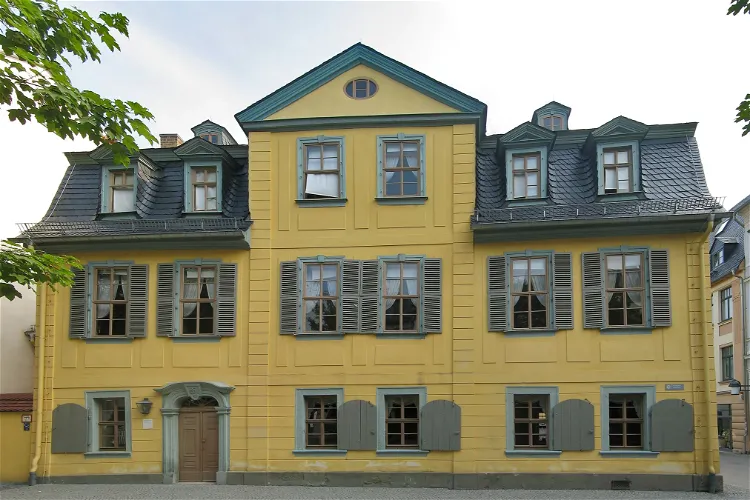
Schiller's House
WeimarSchiller's House, also known as Schillerhaus, is a museum located in Weimar. It is managed by the Klassik Stiftung Weimar and was once the home of the renowned German poet, philosopher, physician, historian, and playwright Friedrich Schiller. The museum offers a unique opportunity to explore the life and works of Schiller in the very place he once lived.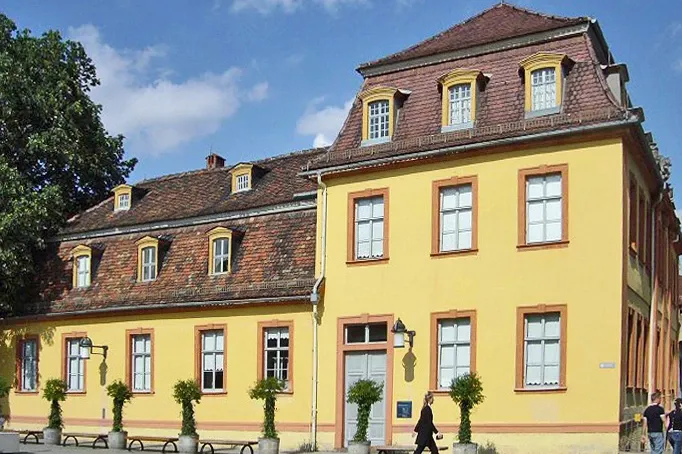
Wittumspalais
WeimarThe Wittumspalais is a museum located in Weimar, Germany. It is operated by the Klassik Stiftung Weimar, a foundation dedicated to preserving and promoting the cultural heritage of Weimar. The museum offers a glimpse into the historical and cultural life of the city.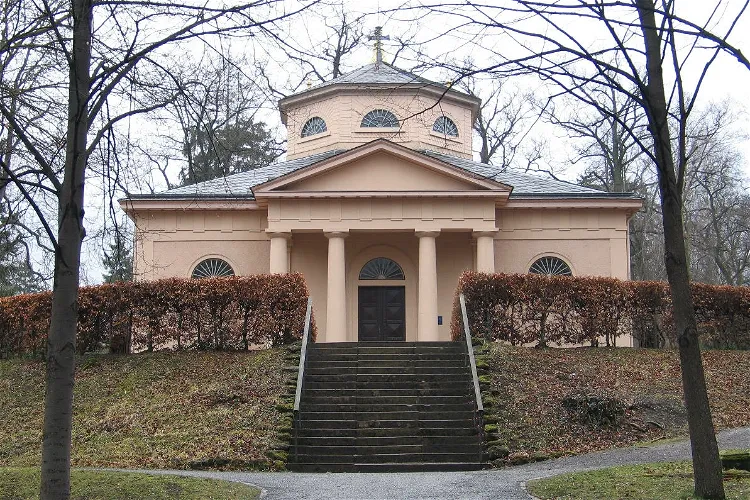
Classical Foundation Weimar
WeimarThe Klassik Stiftung Weimar, or Classical Foundation Weimar, is a major cultural institution in Germany. It boasts an impressive collection of over 20 museums, palaces, historic houses, and parks, along with a vast array of literary and art collections. This makes it a significant destination for those interested in exploring Germany's rich cultural history.
Goethe's garden house (
WeimarGoethe's Garden House, nestled in the Park an der Ilm in Weimar, served as the primary residence and workspace of the renowned German writer, Johann Wolfgang von Goethe. This historical site offers a unique insight into the life and work of one of Germany's most celebrated literary figures.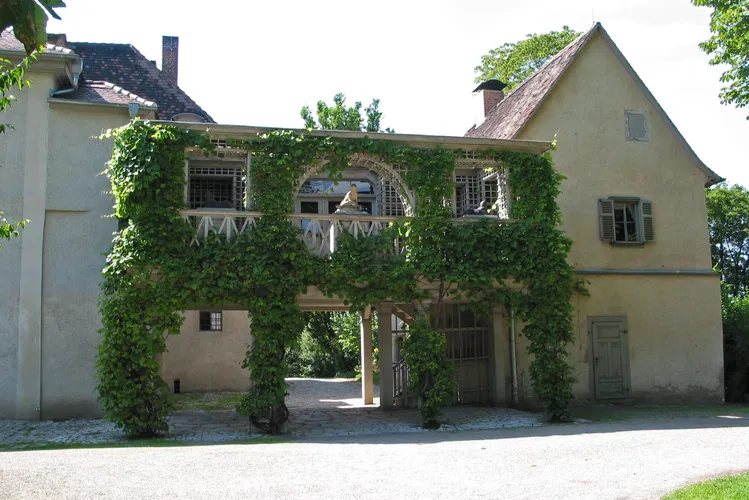
Tiefurt House
WeimarTiefurt Castle is a quaint castle situated on the banks of the Ilm River. It is nestled in the village of Tiefurt, which is approximately four kilometers away from the heart of the city of Weimar. This location makes it a peaceful retreat away from the bustling city center, yet close enough for easy access.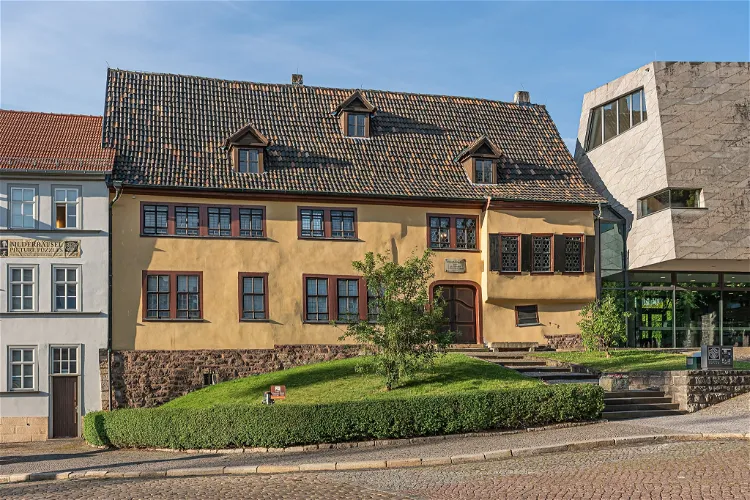
Bach House
EisenachThe Bach House in Eisenach, Germany, is a significant site for music enthusiasts and history buffs alike. This 15th-century manor-style house-museum is where the renowned composer Johann Sebastian Bach was born and spent part of his childhood. Visitors can step back in time and explore the environment that nurtured one of the world's greatest composers.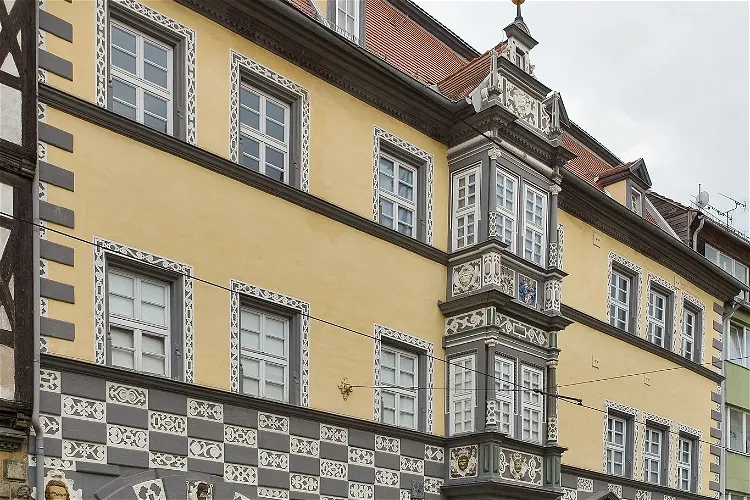
Stadtmuseum
ErfurtThe Stadtmuseum Erfurt is a museum dedicated to the history of the city of Erfurt. It is located in the Haus zum Stockfisch, a historic building in the city. The museum is an institution of the state capital Erfurt and is part of its history museums. It provides a comprehensive overview of the city's history, making it an ideal destination for those interested in learning more about Erfurt's past.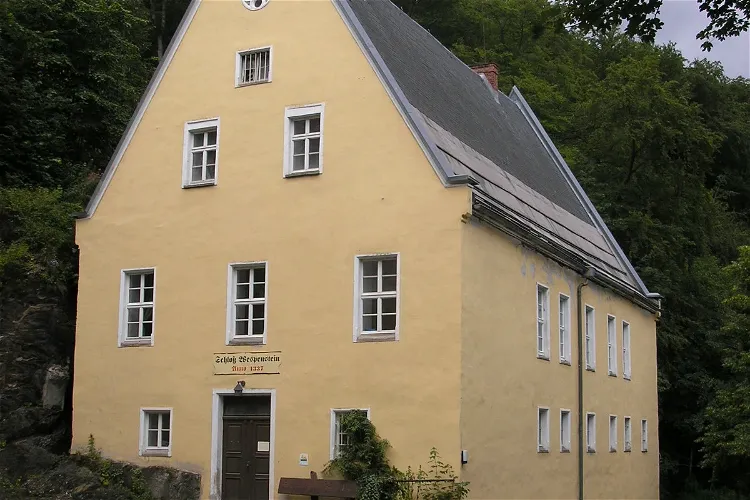
Schloss Wespenstein
GräfenthalSchloss Wespenstein is a historic castle located in the city of Gräfenthal in Thuringia, right on the border with Bavaria. The castle played a significant role in securing the pass section of a medieval army and trade route that stretched from Leipzig via Saalfeld to Nuremberg over the ridge of the Thuringian Slate Mountains. This strategic location underscores the historical importance of the castle.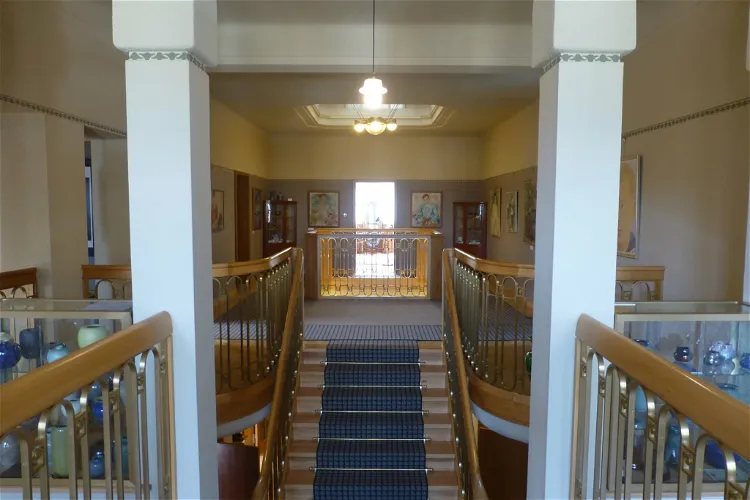
Van de Velde-Museum
GeraThe Schulenburg House, located at Straße des Friedens 120 in Gera, is a grand bourgeois villa designed and built by the renowned architect Henry van de Velde. This architectural masterpiece is under monument protection, preserving its historical and cultural significance.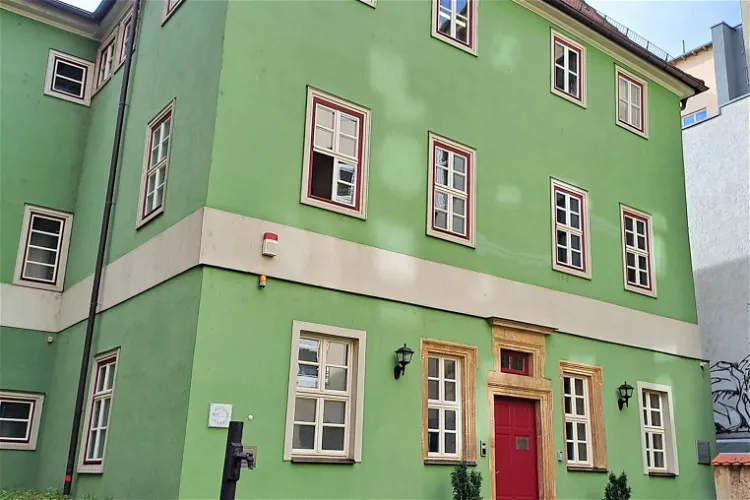
Romantikerhaus
JenaThe Romantikerhaus Jena is a museum that is committed to the research, preservation, and dissemination of the Jena Early Romanticism. It is a part of the Municipal Museums Jena and belongs to the JenaKultur. The museum is the only one in Jena under municipal sponsorship that exclusively commemorates the city's cultural bloom around 1800 and questions its significance for modern art and culture.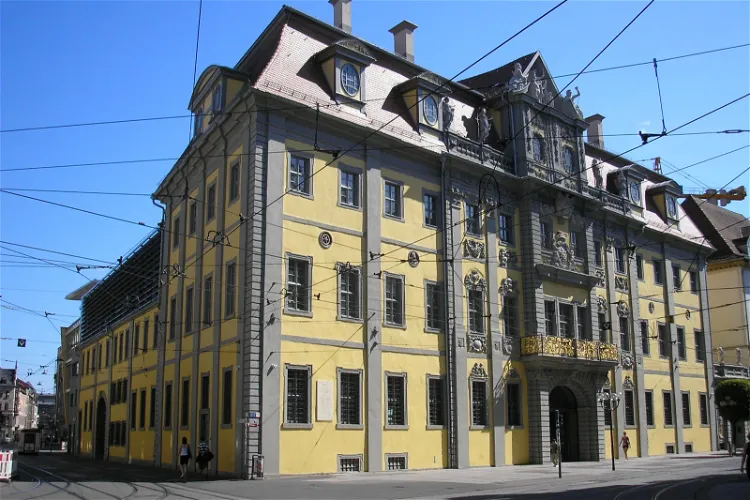
Angermuseum
ErfurtThe Angermuseum, an art museum in Erfurt, was opened on 27 June 1886. The museum is located in a historic building that once served as Erfurt's public weighing scales, where travelling merchants would bring their goods to be weighed for the payment of the city's customs duties.
Schloss Brandenstein
RanisSchloss Brandenstein, also known as Burg Brandenstein, is a historic castle located in the Brandenstein district of the city of Ranis in the Saale-Orla district in Thuringia. The castle is situated on a Zechstein reef, a unique geological feature that adds to the charm and historical significance of the site.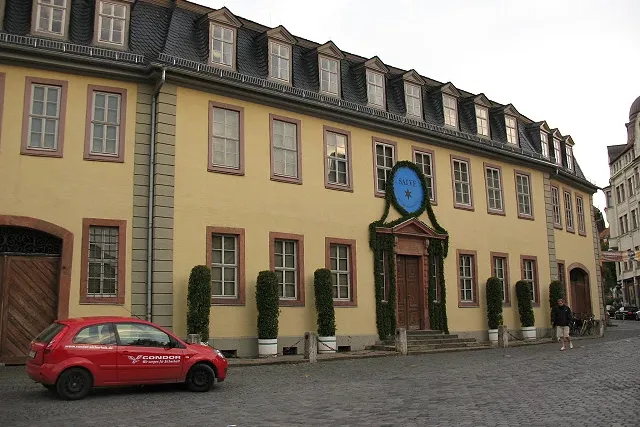
Goethe's House
WeimarGoethe's House, also known as the House on Frauenplan, is a museum located in Weimar. It is operated by the Klassik Stiftung Weimar and is situated in the residence where the renowned German writer Johann Wolfgang von Goethe lived and died. This historical site offers a unique insight into Goethe's life and work.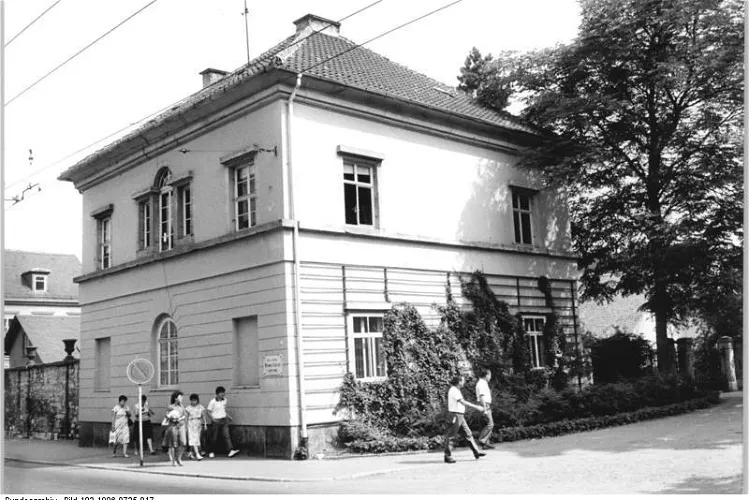
Liszt-Haus
WeimarThe Liszt-Haus is a museum located in Weimar, in the German state of Thuringia. It is dedicated to the life and works of the renowned Hungarian composer, Franz Liszt, who resided in this house. The museum offers a unique insight into the life of the composer, making it a significant destination for music enthusiasts and history buffs alike.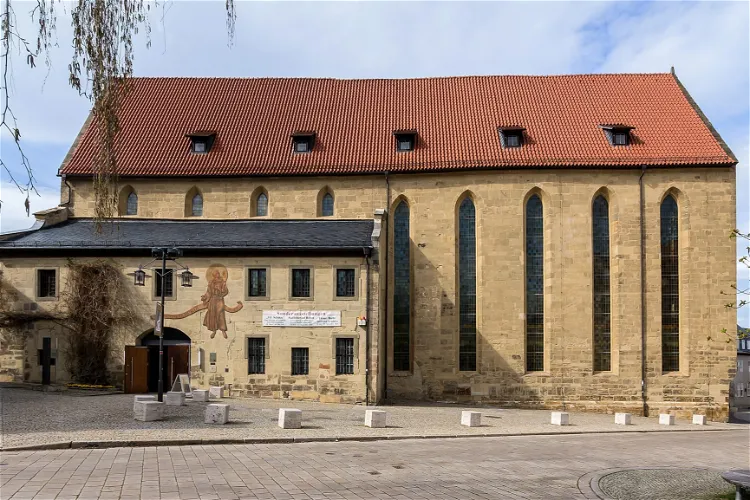
Stadtmuseum Saalfeld im ehemaligen Franziskanerkloster
Saalfeld/SaaleThe Stadtmuseum Saalfeld is housed in the former Saalfeld Franciscan monastery, encompassing the entire building complex. This means that the historical architecture of the former monastery, including its cloisters and Gothic roof truss, forms part of the exhibition. This unique setting provides visitors with a rich historical context for the exhibits on display.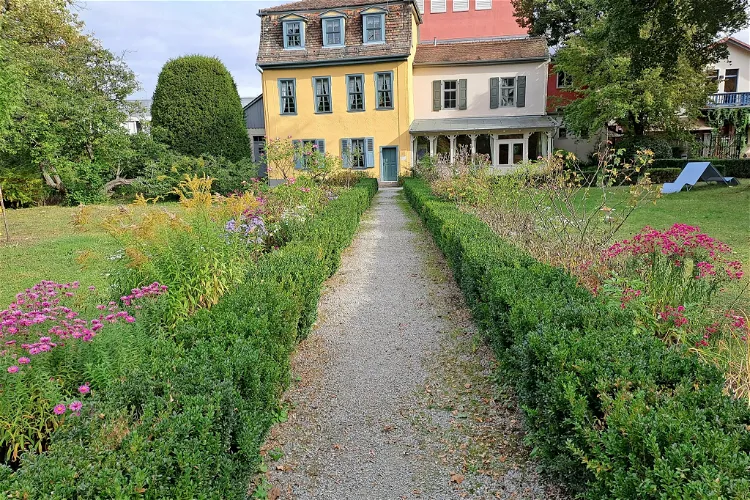
Schiller's Garden House
JenaSchiller's Garden House in Jena is a significant historical site, as it is one of only two preserved residences of the renowned German poet, philosopher, physician, historian, and playwright Friedrich Schiller. Schiller resided here with his family during the summers of 1797 to 1799. This period was a productive time for Schiller, during which he penned some of his most important works.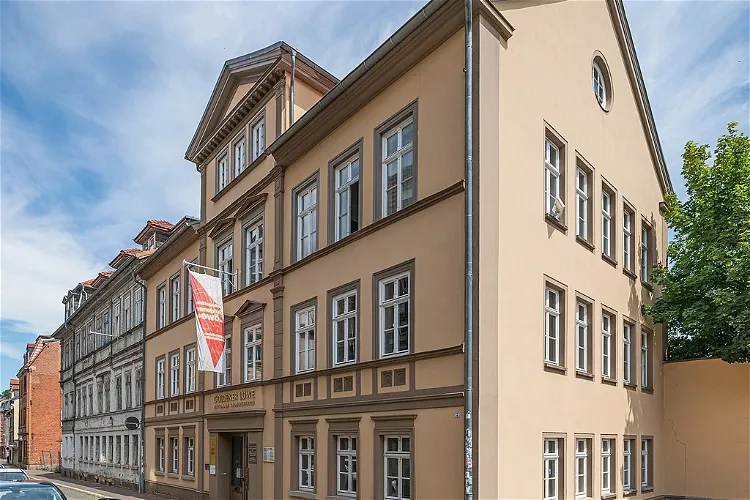
Gedenkstätte "Goldener Löwe"
EisenachThe Gedenkstätte Goldener Löwe is a significant historical site in Eisenach, Germany. It commemorates the founding congress of the Social Democratic Workers' Party (SDAP) in 1869. This party later evolved into the Social Democratic Party of Germany (SPD), which is still active today. The memorial is located in the former Golden Lion inn, a key location in the early history of German social democracy.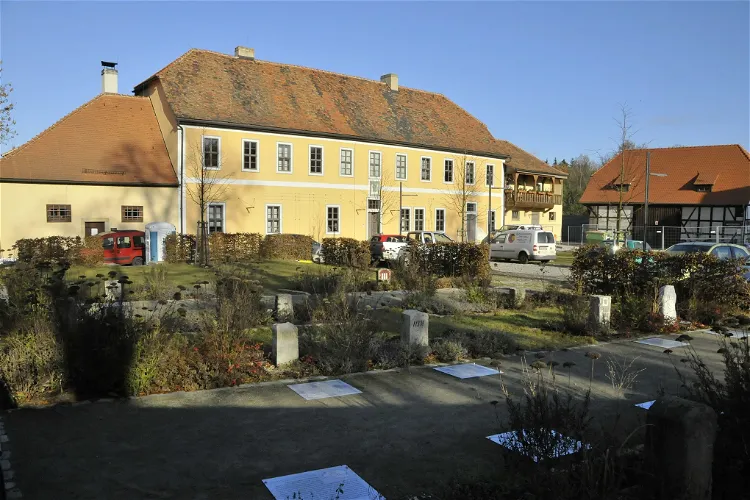
Lapidarium Willrode
ErfurtThe Lapidarium Willrode is a unique collection of historical border and boundary stones. It is situated at the Forsthaus Willrode, which is located near the Thuringian state capital, Erfurt. This collection provides a fascinating insight into the history of the region, with each stone marking the outer boundaries of historical territories.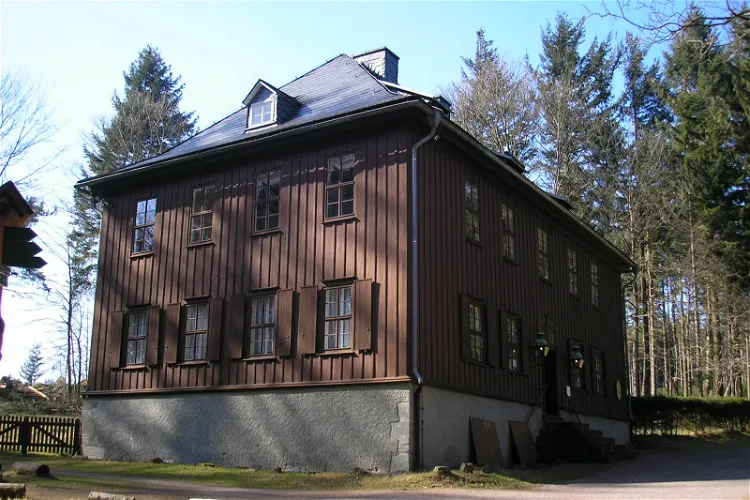
Jagdhaus Gabelbach
IlmenauThe Jagdhaus Gabelbach is a historical hunting lodge nestled in the Thuringian Forest, not far from Ilmenau. Constructed in 1783, this late Baroque structure now serves as a museum dedicated to the life and works of Johann Wolfgang von Goethe, the renowned German writer and statesman. The museum is easily accessible via the road from Ilmenau to Frauenwald and Neustadt am Rennsteig.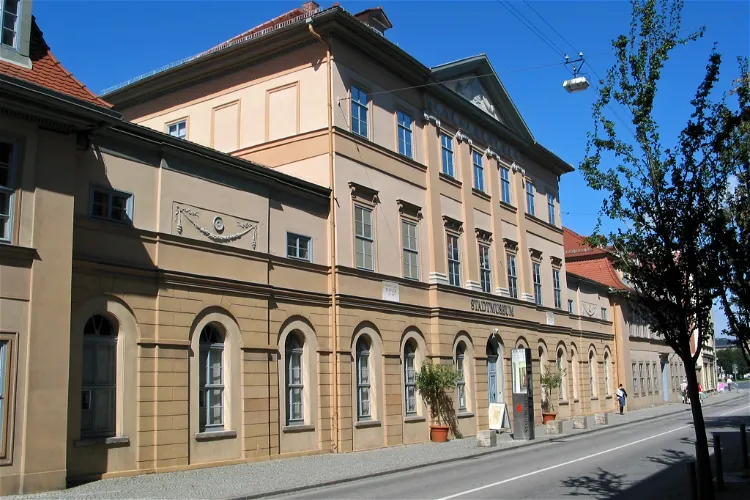
Stadtmuseum Weimar
WeimarThe Stadtmuseum Weimar, located at Karl Liebknecht-Straße 5, holds the distinction of being the first city museum in Thuringia. This museum is housed in a classicist residential and commercial building constructed between 1780 and 1803. The building is named after its builder, Friedrich Justin Bertuch, a prominent entrepreneur, writer, and publisher during Goethe's time in Weimar.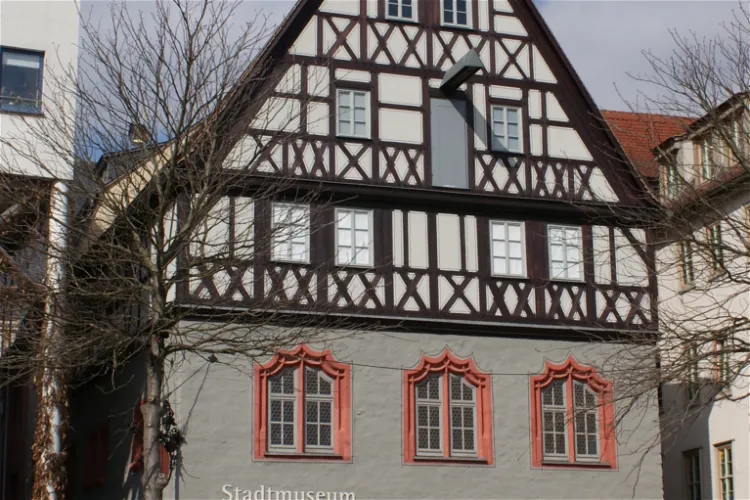
Stadtmuseum Jena
JenaThe Stadtmuseum Jena, situated in the Göhre on the northern side of the historic Jena market square, is a place of rich history. The foundations of the Göhre, where the museum is housed, date back to the 13th century, adding a layer of historical depth to your visit.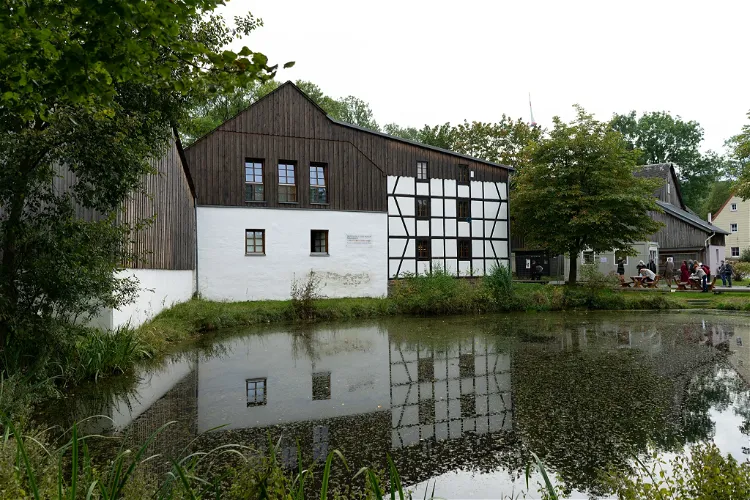
German-German Museum Mödlareuth
GebersreuthThe German-German Museum Mödlareuth is situated in the town of Mödlareuth, which was once divided by the inner German border. This unique location provides a tangible historical context for the museum's exhibits, making it a fascinating destination for those interested in the history of Germany's division and reunification.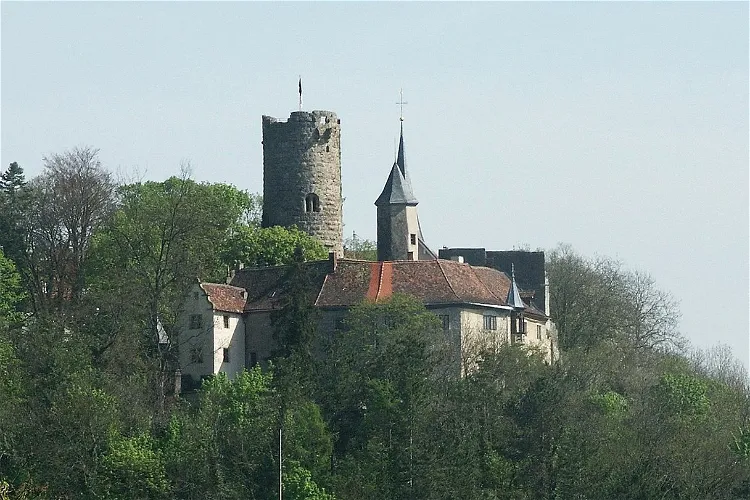
Krautheim Castle
KrautheimBurg Krautheim, also known as Krautheim Castle, was constructed in 1213 by Wolfrad I. von Krautheim. It is located on a mountain spur above the town of Krautheim in the Hohenlohe district in Baden-Württemberg, Germany. The castle's strategic location offers a panoramic view of the surrounding area, making it a fascinating destination for tourists.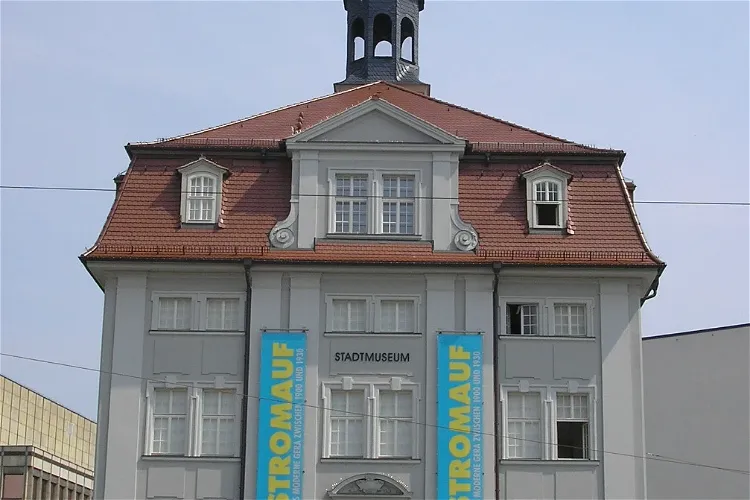
Stadtmuseum
GeraThe Stadtmuseum in Gera is one of four city museums, with a primary focus on the history of the city. It provides a comprehensive overview of the city's history, from its early origins to its development as a residence city of the Reuss. The museum's collections have been gradually built up and are divided into natural history and cultural history sections.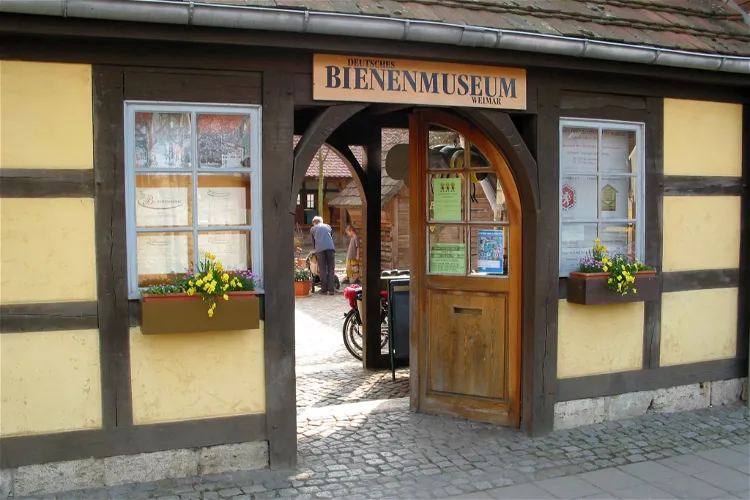
German Bee Museum Weimar
WeimarThe German Bee Museum Weimar, founded in 1907 by Ferdinand Gerstung, offers a deep dive into the world of beekeeping. Gerstung, also known as the 'Bee Father', established the museum to educate and inform about the various aspects of beekeeping. The museum's rich history adds to its charm and appeal for visitors.
Stadtmuseum in der Beschußanstalt
Zella-MehlisThe Stadtmuseum in Zella-Mehlis is housed in the building of the former Beschussanstalt, a facility where firearms were tested. This location adds a unique historical context to the museum, as it reflects the city's long-standing tradition in the weapons industry. Visitors can explore the museum within this historical building, which provides a tangible connection to the city's past.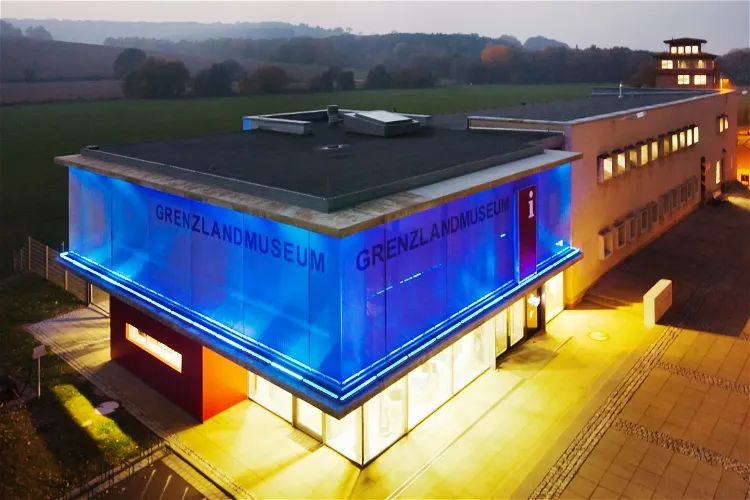
Grenzlandmuseum Eichsfeld
TeistungenThe Borderland Museum Eichsfeld is a historical institution situated in Central Germany. It is located at the former inner-German border that once separated East and West Germany. The museum's focus is on the Cold War era and the specific division of Germany during this time.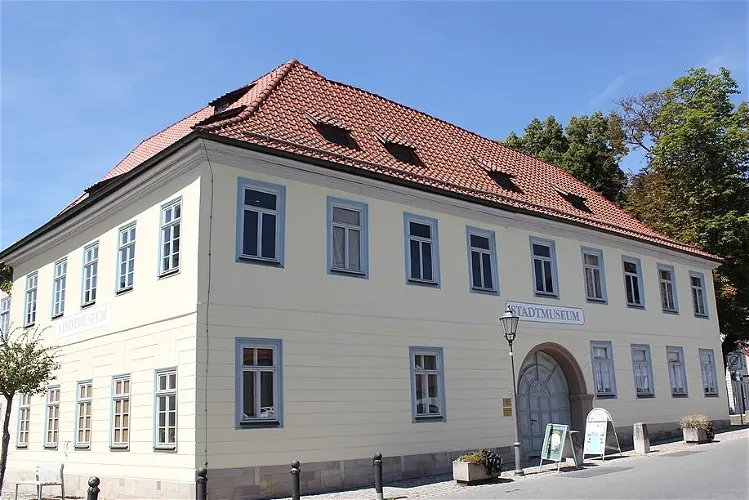
Stadtmuseum Hildburghausen
HildburghausenThe Stadtmuseum Hildburghausen is a museum that focuses on the city history of Hildburghausen. It provides a comprehensive overview of the city's past, making it an ideal destination for those interested in learning more about the local history.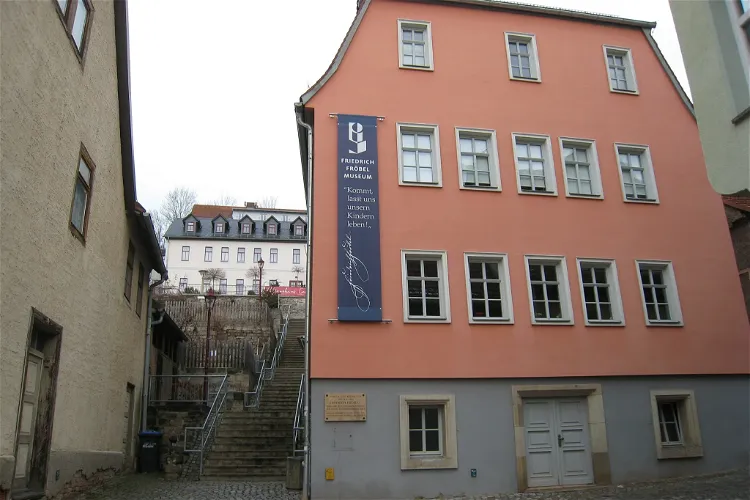
Friedrich-Fröbel-Museum
Bad BlankenburgThe Friedrich-Fröbel-Museum in Bad Blankenburg is a significant site in the history of early childhood education. It is housed in the very building where Friedrich Fröbel, often referred to as the 'founder' of the kindergarten, opened his first 'play and employment institution' in 1839/40. This institution would later evolve into what we now know as the kindergarten. The museum has been located in this building since 1982, making it a place of historical significance for those interested in the origins of early childhood education.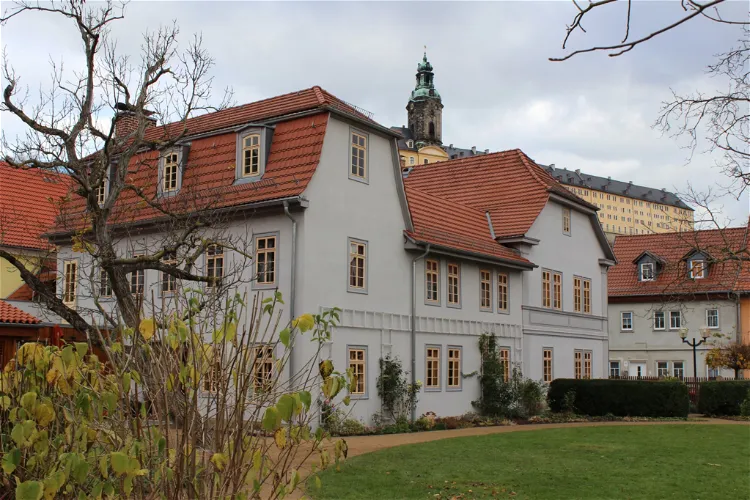
Schillerhaus Rudolstadt
RudolstadtThe Schillerhaus in Rudolstadt is a literature museum dedicated to the renowned German poet, philosopher, physician, historian, and playwright Friedrich Schiller. It is located in the former residence of the von Lengefeld family, also known as the Beulwitzsches Haus. The museum offers a deep dive into the life and works of Schiller, making it a significant destination for literature enthusiasts.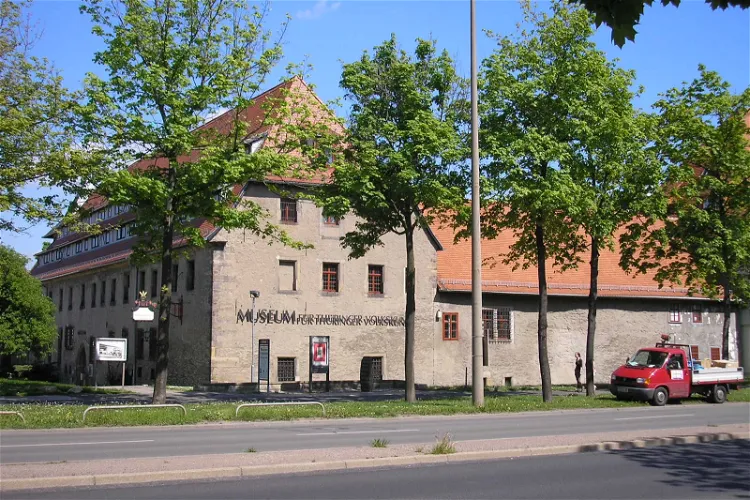
Museum für Thüringer Volkskunde
ErfurtThe Museum für Thüringer Volkskunde Erfurt is recognized as one of the largest folk museums in Germany. This makes it a significant destination for those interested in exploring the rich folk culture of the country.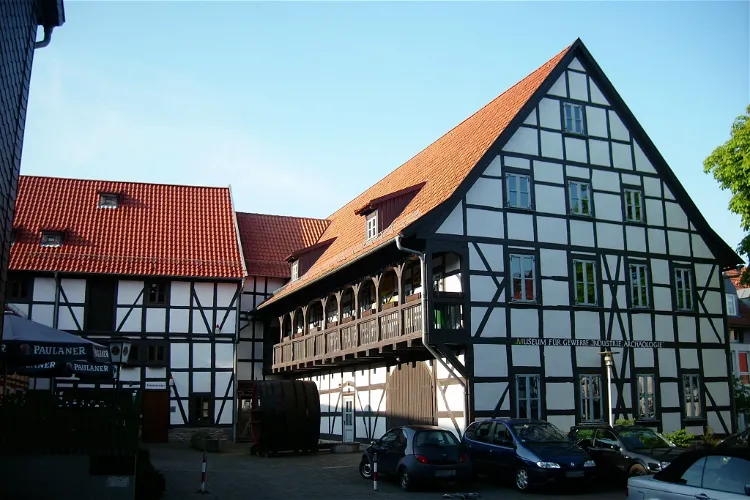
Museum Tabakspeicher
NordhausenThe Tabakspeicher is a city museum located in Nordhausen, Thuringia. It is dedicated to showcasing the historical and cultural development of the city. Visitors can gain insights into the city's past and understand its evolution over the years.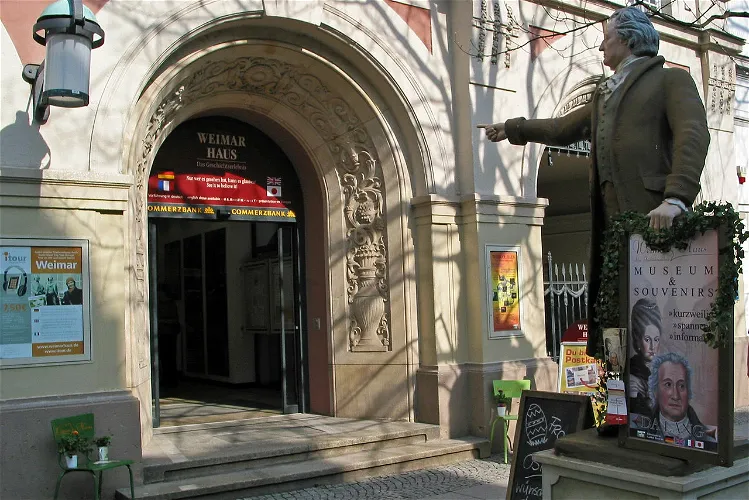
Weimarhaus
WeimarThe Weimar Haus is a unique museum that offers a comprehensive view of the city's history, from the Stone Age to the Weimar Classicism. The museum uses dioramas with wax figures, elaborate light installations, and appropriate soundscapes to bring each era to life. This immersive experience allows visitors to gain a deeper understanding of the city's past and its cultural significance.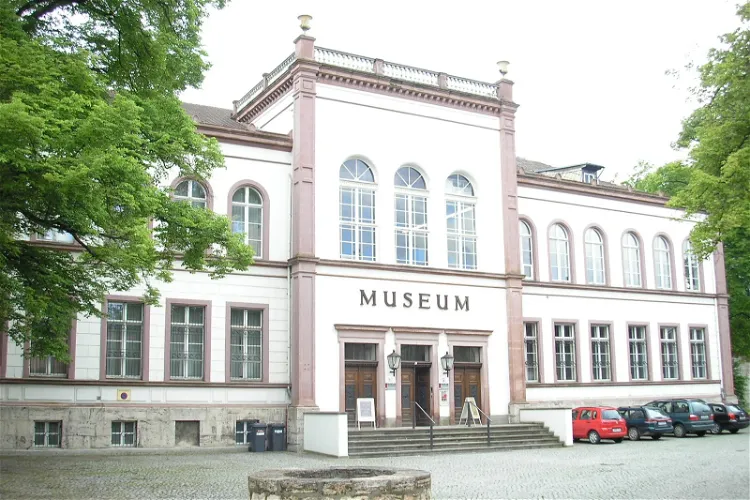
Kulturhistorisches Museum
MühlhausenThe Museum am Lindenbühl is a cultural history museum situated in Mühlhausen/Thüringen. It is housed in a Neo-Renaissance style building that was built between 1818 and 1871 as a gymnasium. Since 1947, it has been home to a regional history museum.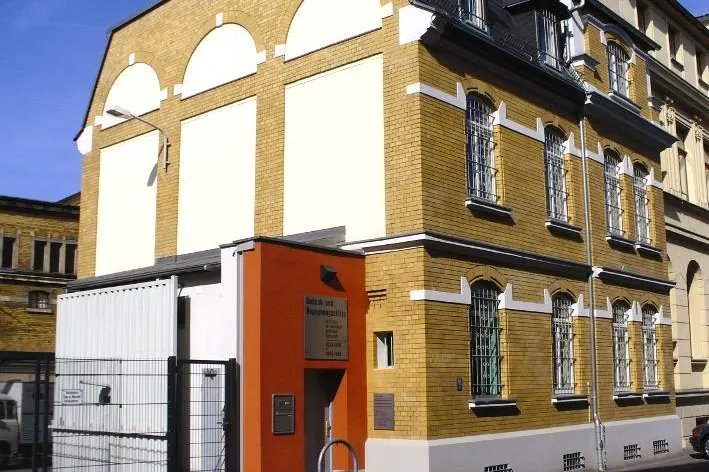
Gedenkstätte Amthordurchgang e. V.
GeraThe Gedenkstätte Amthordurchgang in Gera serves as a memorial site for the victims of both German dictatorships. It is an important point of contact for communication, information, and documentation. The memorial is located in a building that was part of a prison built in 1874 and served as a detention center until 1989. The actual cell block was demolished in 1999, and the memorial is now located in the former administrative wing of the prison.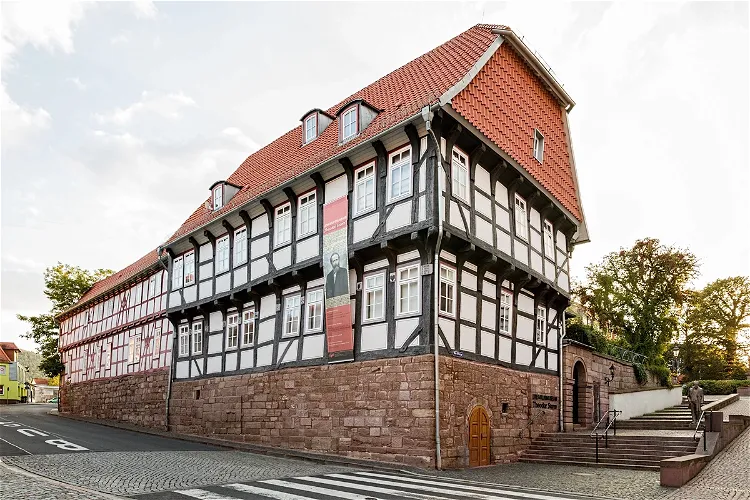
Literaturmuseum Theodor Storm
Heilbad HeiligenstadtThe Literature Museum is housed in the Mainzer Haus, a historical building that dates back to 1436. This building is one of the oldest in Heiligenstadt and has the distinction of having survived the city fire of 1739. The Mainzer Haus adds a layer of historical significance to the museum, making it a site of interest for those keen on architecture and history.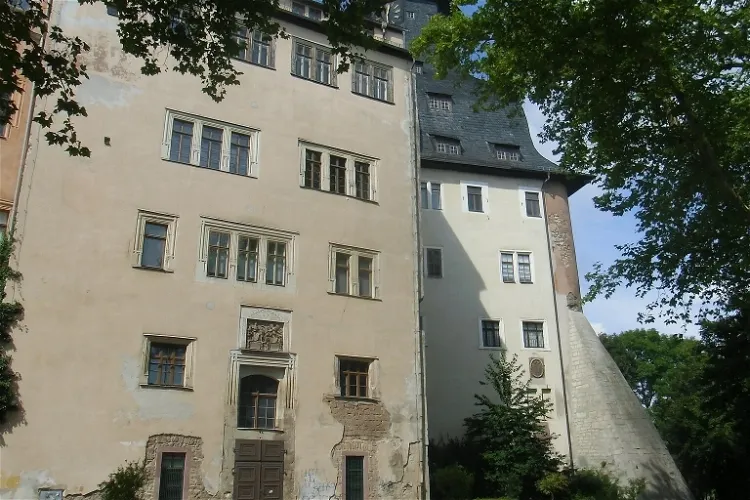
Sondershausen Palace
SondershausenOver the centuries, Sondershausen Palace has undergone numerous architectural transformations, reflecting influences from various periods. The Renaissance influence is evident in the south, east, and old north wings of the palace, which were built between the 1530s and the 1550s. The Baroque style is seen in the alterations and enlargements made to the three Renaissance wings in the 1680s. The Rococo influence is seen in the new west and north wings, which were started in 1764.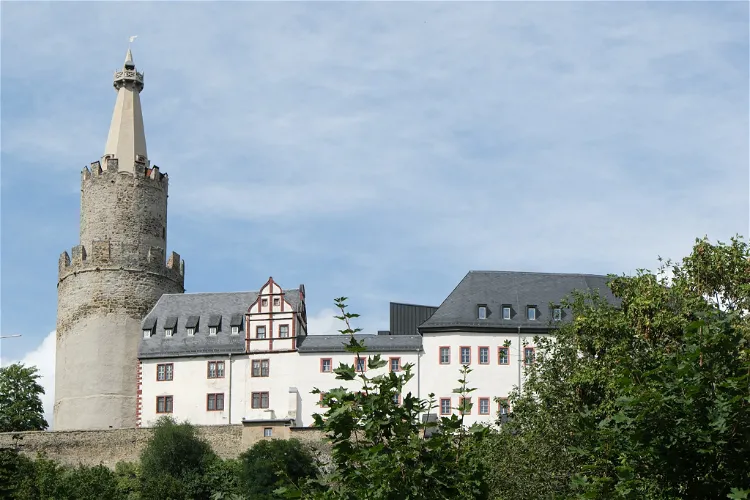
Osterburg (Weida)
WeidaThe Osterburg is a historical castle located on a hill in the center of the city of Weida, in the Thuringian district of Greiz. Its strategic location offers a panoramic view of the city, making it a popular spot for tourists. The castle's history and architecture also provide a glimpse into the region's past.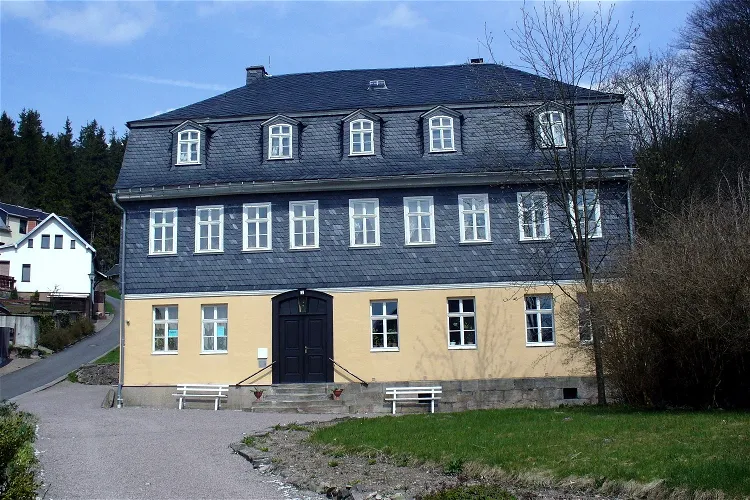
Goethemuseum
IlmenauThe Goethemuseum Stützerbach is situated in the former residence of Johann Niclaus Gundelach, a glassworks owner. This location, nestled between the towns of Ilmenau and Schleusingen, offers a unique historical context for the museum. Visitors can explore the place where Gundelach once lived and worked, providing a tangible connection to the past.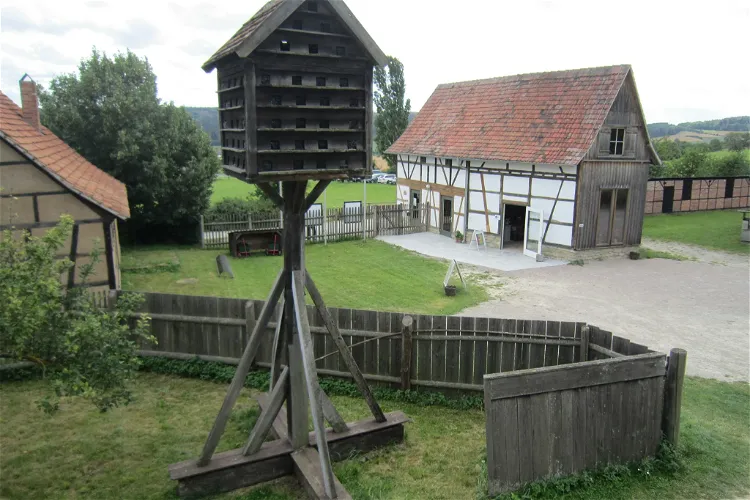
Thüringer Freilichtmuseum Hohenfelden
HohenfeldenThe Thüringer Freilichtmuseum Hohenfelden, founded in 1979, serves as an open-air museum showcasing rural buildings from the Central Thuringia region in Hohenfelden. This museum was established to preserve and exhibit the architectural heritage of the region, providing a unique insight into the rural life of the past.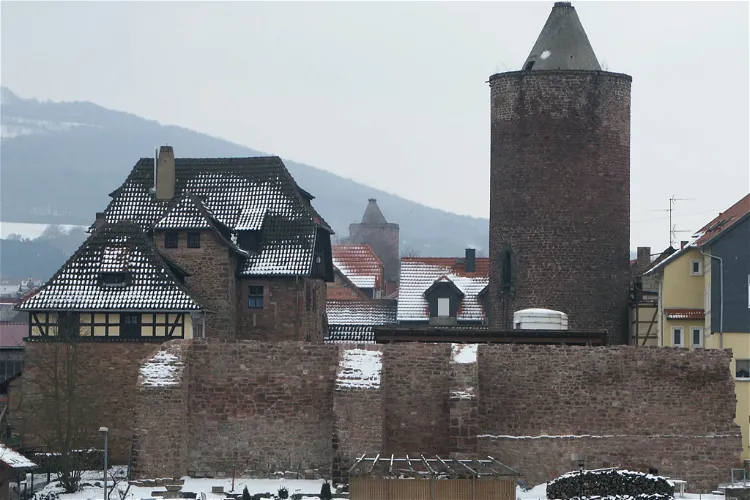
Museum Burg Wendelstein - Vacha
VachaBurg Wendelstein is a castle that was built during the medieval period and is situated in the city of Vacha, in the Wartburgkreis district of Thuringia, Germany. The castle was converted into a city museum in 1986, making it a significant historical and cultural site for visitors to explore.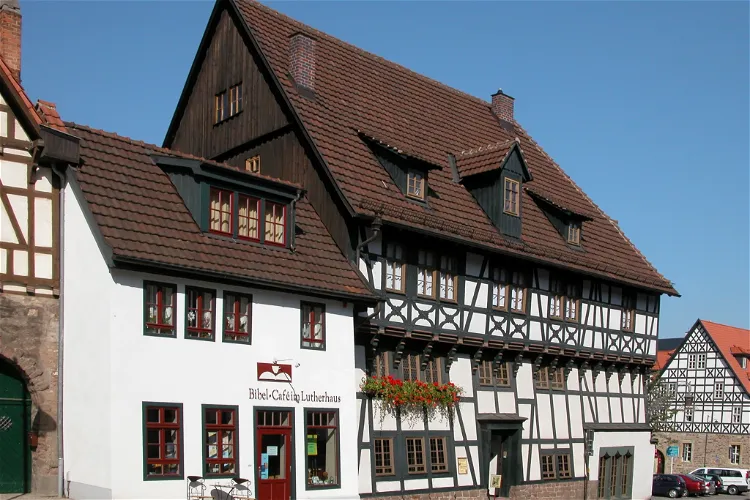
Lutherhaus Eisenach
EisenachThe Lutherhaus in Eisenach is a significant historical site, as it was the home of Martin Luther during his schooling years from 1498 to 1501. The house is a half-timbered patrician house, a common architectural style of the time, and was owned by the Cotta family who hosted Luther.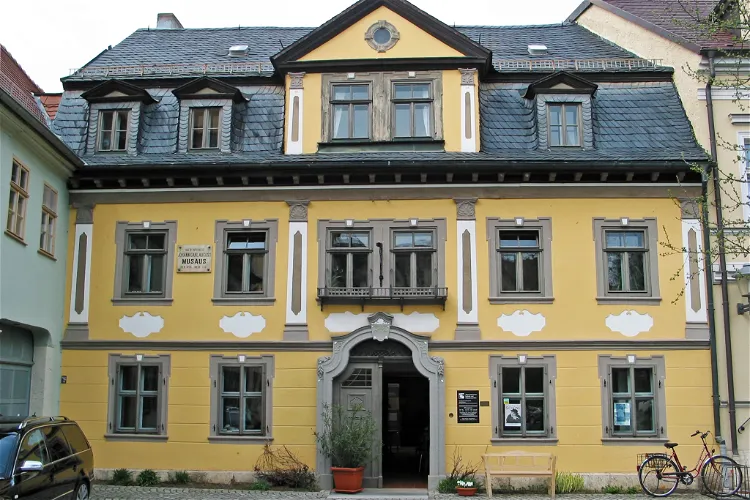
ALBERT-SCHWEITZER-GEDENKSTÄTTE
WeimarThe Albert-Schweitzer-Memorial in Weimar, which was inaugurated in 1984, is located in the historic Musäushaus at Kegelplatz 4. This location adds a layer of historical significance to the memorial, making it an interesting destination for those interested in both history and the life and work of Albert Schweitzer.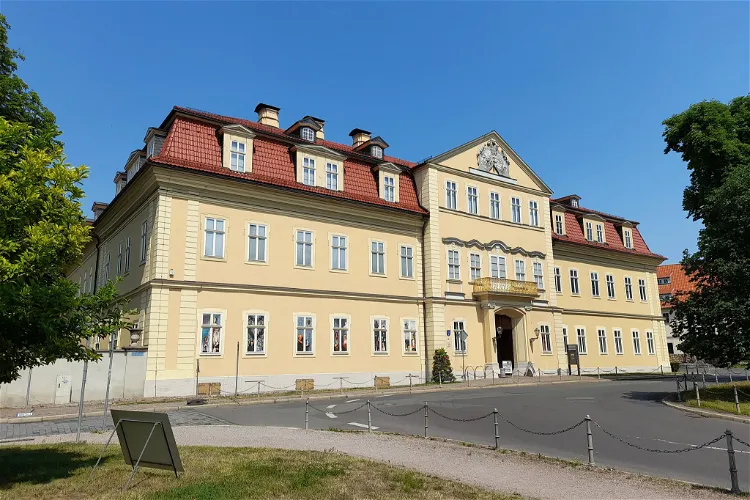
Schlossmuseum Arnstadt "Neues Palais"
ArnstadtThe Neues Palais, located in Arnstadt, Thuringia, is a significant historical site that currently houses the Schlossmuseum Arnstadt. This palace-turned-museum offers a unique opportunity to explore the rich history and culture of the region.
Flohburg - The Nordhausen Museum
NordhausenThe Flohburg is a Gothic half-timbered house located in Nordhausen, Thuringia. It is recognized as one of the oldest and architecturally significant buildings in the city. Its richly structured facade and steep saddle roof are notable features that contribute to its historical value.
Theatermuseum Meiningen
MeiningenThe Theatermuseum "Zauberwelt der Kulisse" in Meiningen is a unique museum that specializes in the historical stage designs of the Meininger Hoftheater. It offers a fascinating insight into the world of theater and the art of stage design, making it a worthwhile visit for anyone interested in theater history.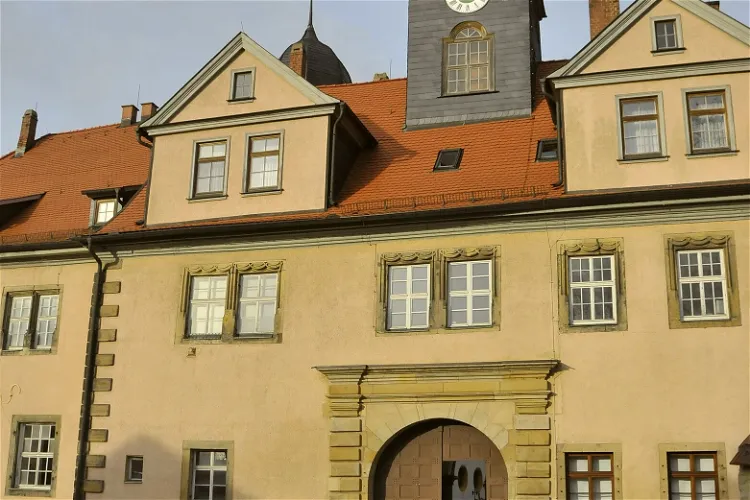
Museum Schloss Tenneberg
WaltershausenSchloss Tenneberg, located in the city of Waltershausen in Thuringia, is a medieval castle that has seen multiple transformations over the centuries. Today, it serves as a museum, offering a unique glimpse into the region's rich history. The castle's strategic location on the northern edge of the Thuringian Forest made it an important stronghold in the past. Now, it offers visitors a chance to step back in time and explore the various facets of its past.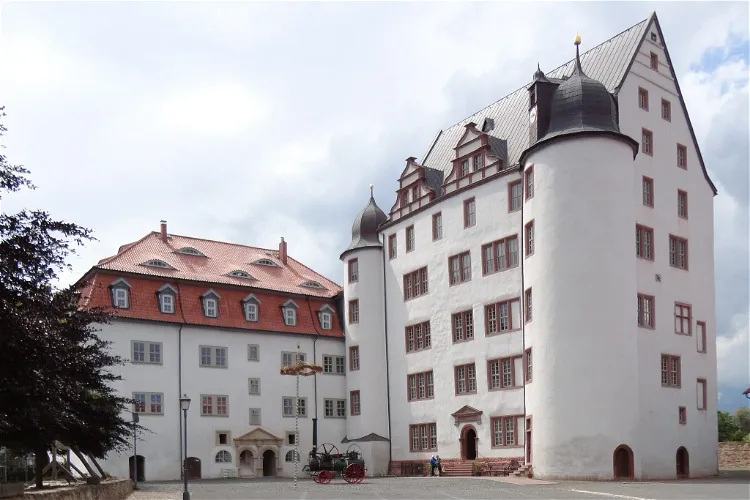
Schloss Heringen
Heringen/HelmeSchloss Heringen is a significant historical site located in the Thuringian town of Heringen/Helme. The castle complex, which dates back to the Renaissance period, was first mentioned in a document from the Fulda Monastery in 1155. This makes it a site of considerable historical interest, offering visitors a glimpse into the region's past.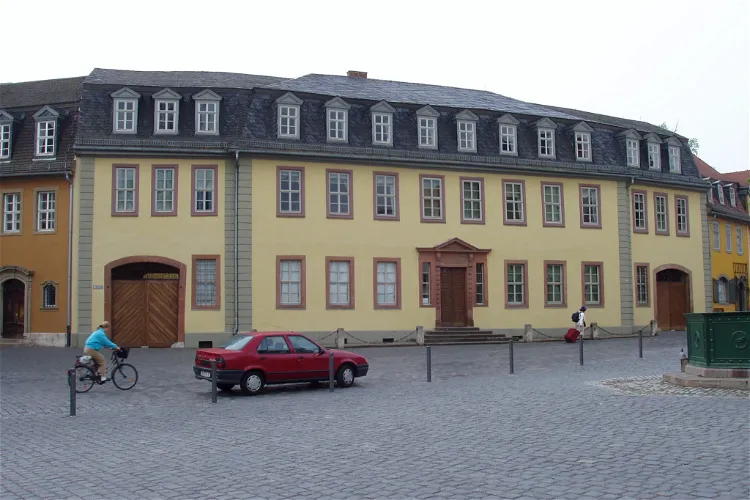
Goethe-Nationalmuseum
WeimarThe Goethe-Nationalmuseum is a museum dedicated to the life and works of the renowned German author Johann Wolfgang von Goethe. It is situated in the town of Weimar in Germany. The museum offers a comprehensive insight into Goethe's life, his literary contributions, and his influence on German culture and literature.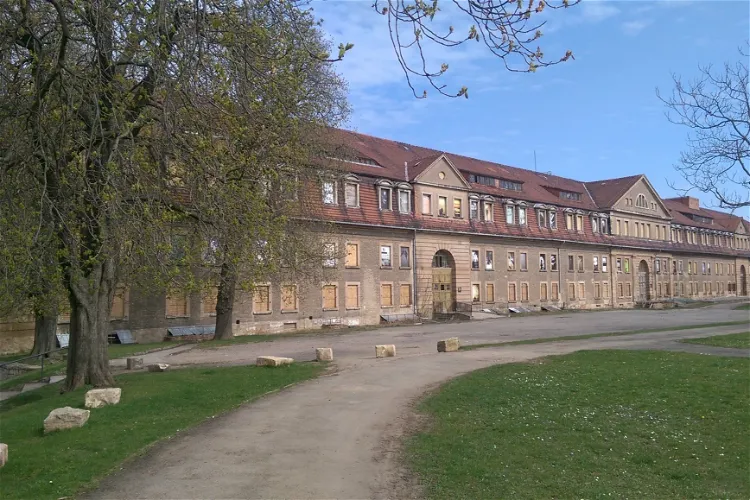
Defensionskaserne
ErfurtThe Defensionskaserne Erfurt, a former military facility, is the largest building on the Petersberg in Erfurt. It has been under monument protection and has been vacant since around the year 2000. This historical building offers a glimpse into the past and is a significant part of Erfurt's history.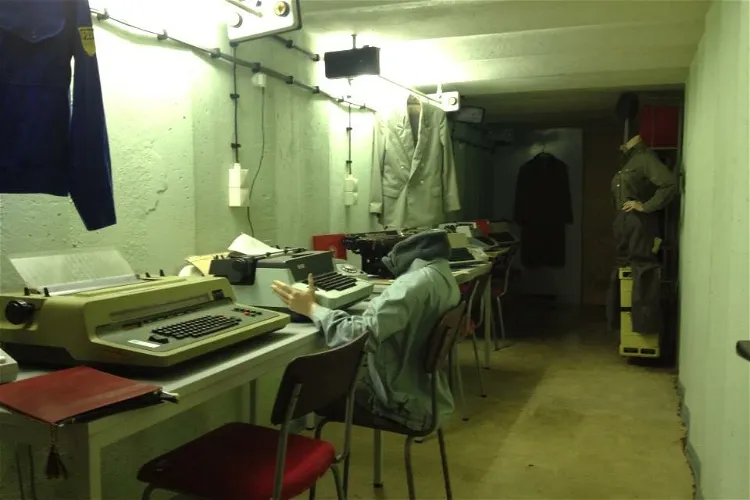
Bunkermuseum
IlmenauThe Bunkermuseum is an intriguing underground building complex nestled in the Thuringian Forest. It is situated near the Ilmenau district of Allzunah in the Ilm-Kreis. This location offers a unique blend of history and nature, making it an interesting destination for tourists.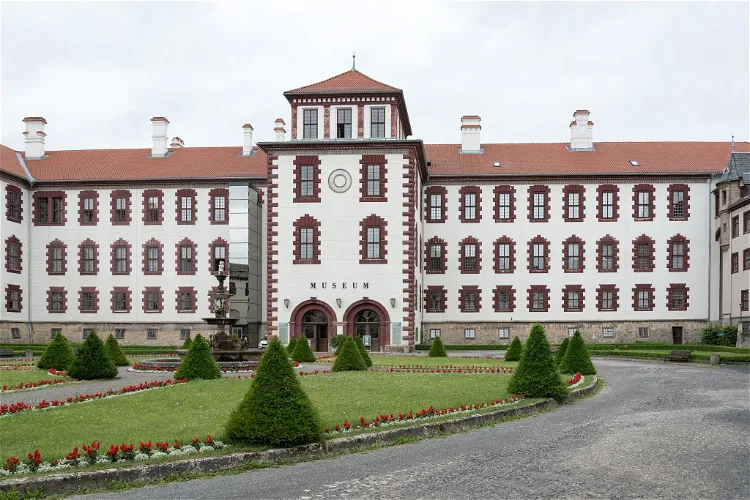
Meininger Museen
MeiningenThe Meininger Museen is a combination of three cultural-historical museums located in the district town of Meiningen. It is the largest museum in southern Thuringia and houses the most extensive art collection in Thuringia. The main part of the museum, divided into four sections, is located in Elisabethenburg Castle, the former residence of the Dukes of Saxe-Meiningen.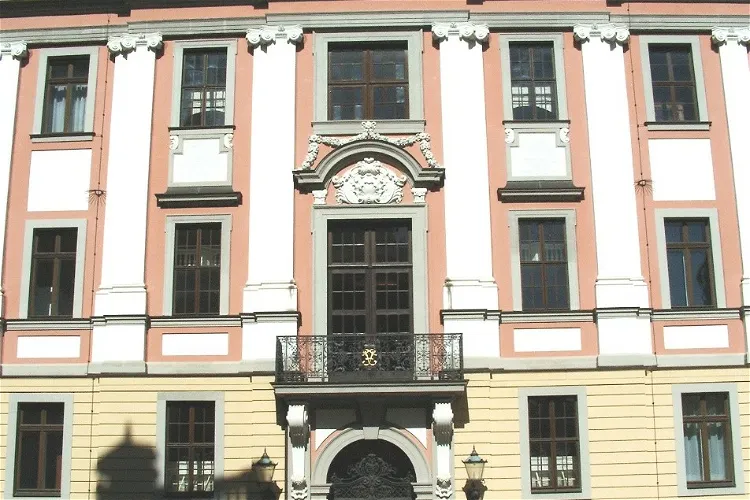
Castle and playing card museum
AltenburgThe Altenburg Castle, known in German as Schloß Altenburg, is a historic monument located in the city of Altenburg, in the Thuringia region of Germany. This castle is a significant part of the city's history and offers a glimpse into the past.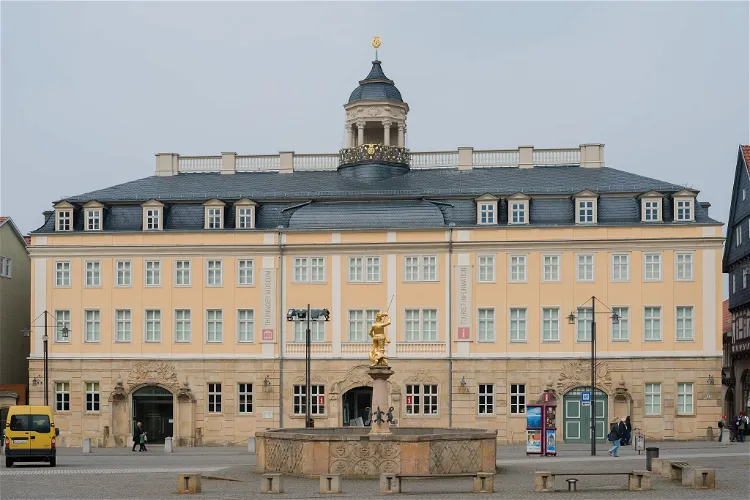
Thüringer Museum Stadtschloss
EisenachThe Thuringian Museum Eisenach is a state museum dedicated to the art and cultural history of Thuringia, as well as the history of the city of Eisenach. It offers a comprehensive collection that provides insights into the region's rich history and cultural heritage. The museum is an integral part of the Thuringian Porcelain Road, a route that connects various locations known for their porcelain production.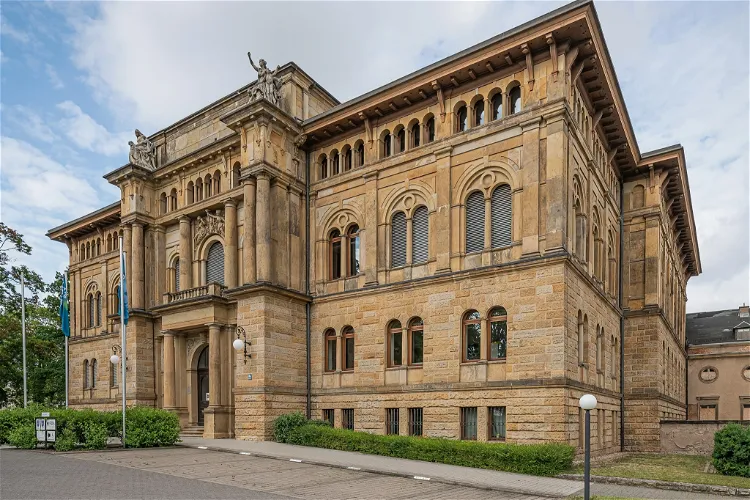
The German Insurance Museum Ernst Wilhelm Arnoldi
GothaThe German Insurance Museum Ernst Wilhelm Arnoldi is a unique institution dedicated to the history of insurance, located in the city of Gotha in Thuringia. The museum is housed in the former headquarters of the Gothaer Life Insurance Bank, a building that carries its own historical significance. This location provides a fitting backdrop for the museum's collection, which explores the development of the insurance industry in Germany.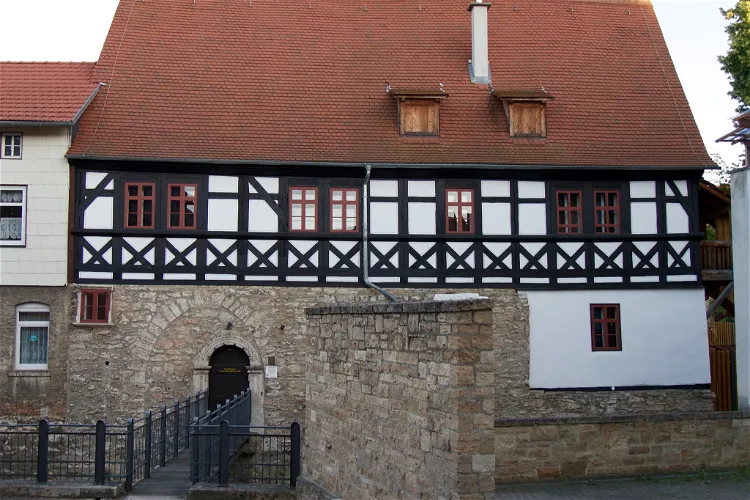
Thuringian Pharmacy Museum in Rosenthal
Bad LangensalzaThe Thuringian Pharmacy Museum, located in Bad Langensalza, is a unique collection of pharmacy history. Since May 18, 2014, it has been housed in one of the oldest half-timbered houses in the city, the Rosenthal House. This provides a unique setting for the museum, adding to the historical significance of the collection.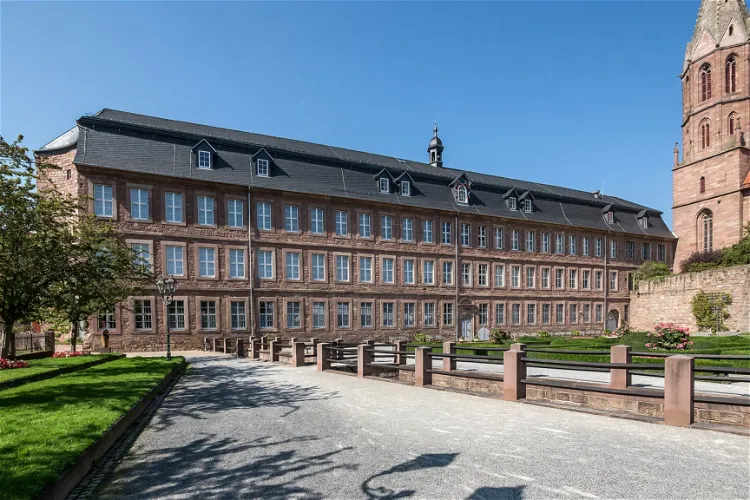
Eichsfeldmuseum
Heilbad HeiligenstadtThe Eichsfeldmuseum, previously known as the Eichsfelder Heimatmuseum, is a cultural and historical museum situated in Heilbad Heiligenstadt in the Eichsfeld district of Thuringia. The museum is located in a Baroque building dating back to 1740, which was once a Jesuit college established by Archbishop Daniel Brendel von Homburg. This historical setting adds a unique charm to the museum, making it a fascinating destination for those interested in history and architecture.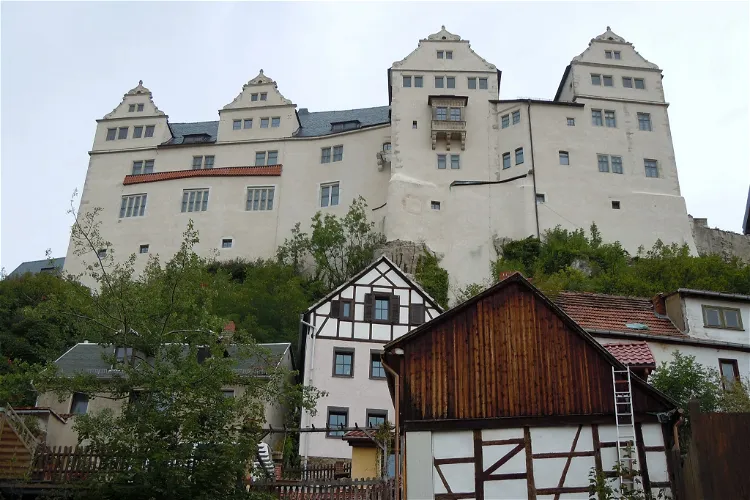
Museum Burg Ranis
RanisBurg Ranis is a castle situated on a ridge near the Thuringian city of Ranis, a short distance from Pößneck. This location offers a unique vantage point and a scenic view of the surrounding area, making it an interesting destination for tourists who appreciate historical architecture and natural beauty.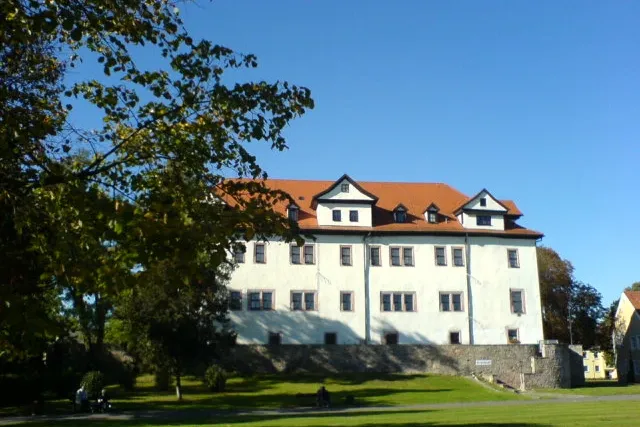
Regionalmuseum im Schloss zu Bad Frankenhausen
Bad Frankenhausen/KyffhäuserThe castle in Bad Frankenhausen, located in Thuringia, was once a secondary residence of the House of Schwarzburg-Rudolstadt. Today, it serves as the home of the Kyffhäuserkreis Regional Museum. This historical site offers a glimpse into the past, showcasing the rich history of the region.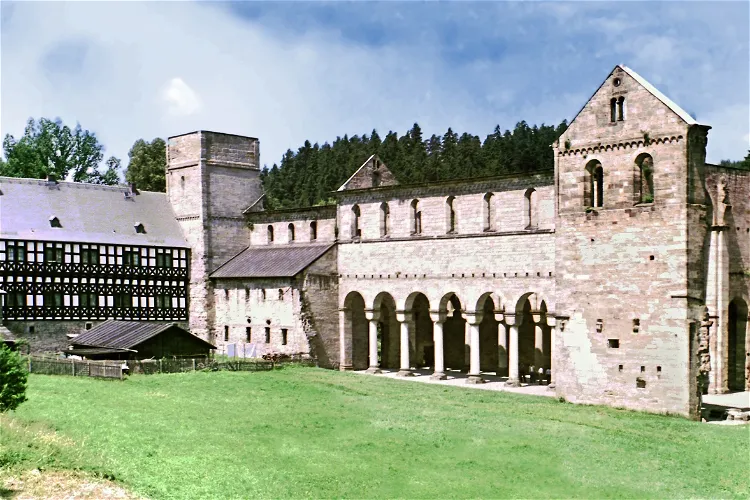
Paulinzella Monastery
KönigseePaulinzella Abbey is a significant historical site located in Paulinzella, within the state of Thuringia and the diocese of Erfurt. This former Benedictine abbey holds a rich history and is a notable landmark in the region. Visitors can explore the remnants of the abbey and learn about its past, making it an interesting destination for those interested in history and architecture.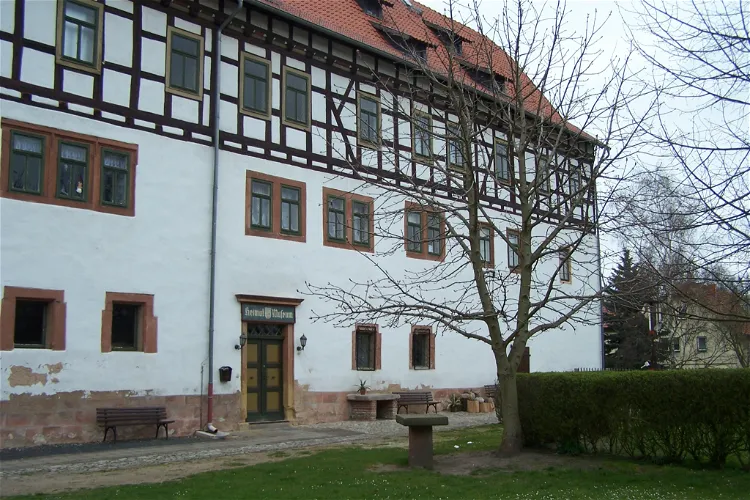
Werratalmuseum
GerstungenThe Werratalmuseum Gerstungen is a regional museum that was established in 1932. It is situated in the premises of a former castle in the municipality of Gerstungen, located in the Wartburgkreis in Thuringia. This museum offers a unique opportunity to explore the rich history and culture of the region.
Keramik-Museum
BürgelThe Keramik-Museum Bürgel is a specialized museum for ceramics, situated in the heart of the pottery town Bürgel in Thuringia. It is conveniently located immediately north of the St. Johannes city church, making it easily accessible for visitors. The museum offers a unique insight into the rich history and craftsmanship of ceramics in the region.
Heimatmuseum Meuselwitz
MeuselwitzThe Heimatmuseum Meuselwitz, located in the town of Meuselwitz in Thuringia, was inaugurated on December 6, 1996. The museum is housed in two old half-timbered houses, which were formerly a weaving mill, at Neugasse 1 and 3. These buildings are situated near the Martinskirche, adding to the historical charm of the location.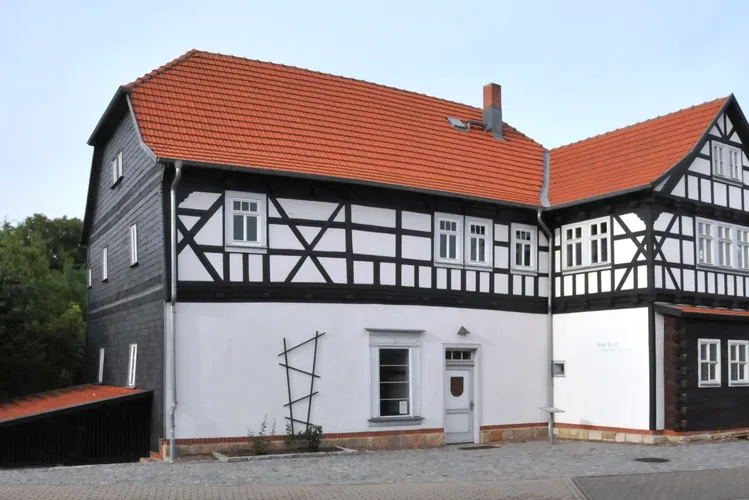
Veit Bach
WechmarIn November 2003, after three years of restoration, the historic mill where Veit Bach lived and worked was transformed into a museum. This museum now stands as a testament to the life and times of Veit Bach, offering visitors a glimpse into the past and the rich history of the Bach family.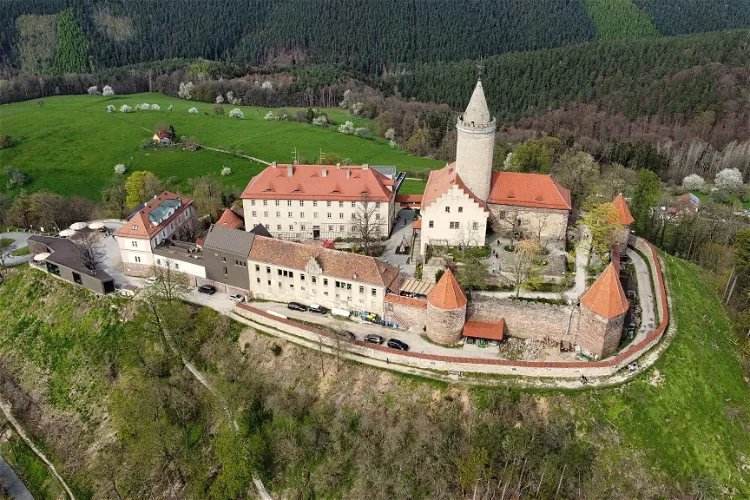
Museum Leuchtenburg
SeitenrodaLeuchtenburg is a castle situated in Seitenroda, Thuringia. This castle, known as the 'Queen of the Saale Valley', is a popular tourist destination. It offers a panoramic view of the Middle Saale Valley and the Thuringian Woodland from its location on a visible mountain cone with a height of 395 meters above sea level. The castle has a long and varied history, serving as a medieval administrative seat, a poorhouse, a madhouse, and a prison. It has been used for tourism since the late 19th century.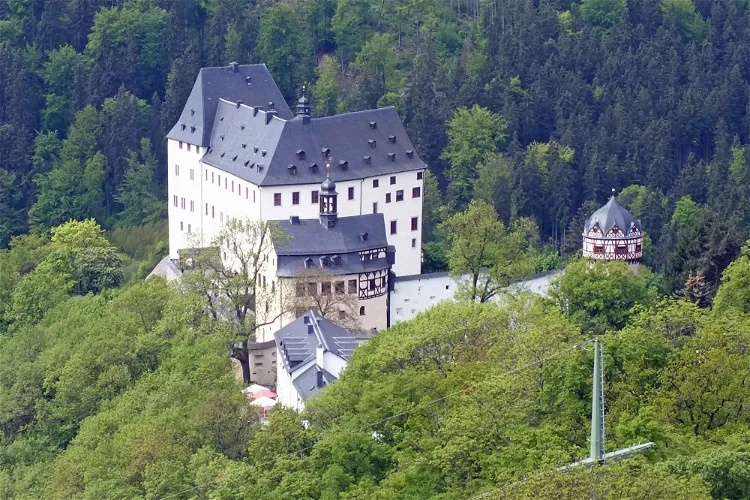
Burgk Castle
BurgkThe castle is now home to a museum that provides a detailed portrayal of the princely lifestyle of the past. Visitors can explore various exhibits that showcase the opulence and grandeur of the era, offering a unique insight into the history and culture of the time.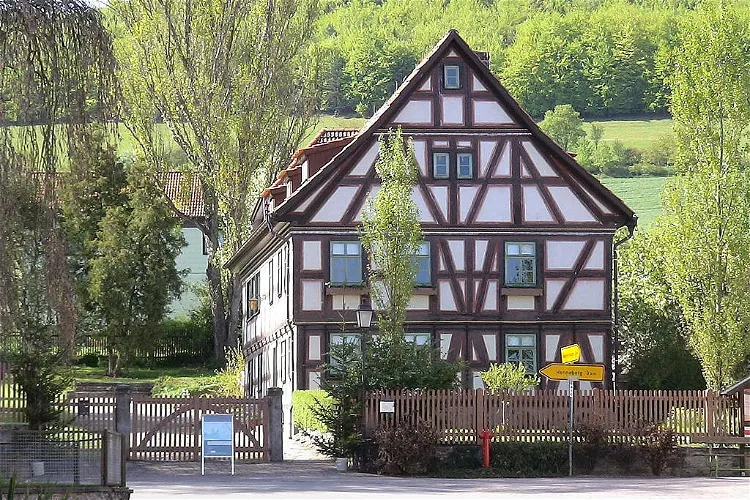
Schiller-Museum Bauerbach
BauerbachThe Schillerhaus in Bauerbach is a significant site for literature enthusiasts. It served as a temporary residence for the renowned poet Friedrich Schiller from December 7, 1782, to July 24, 1783. Today, it houses a literature museum that commemorates this period of Schiller's life. Visitors can explore the house and gain insights into the life and works of this influential figure in German literature.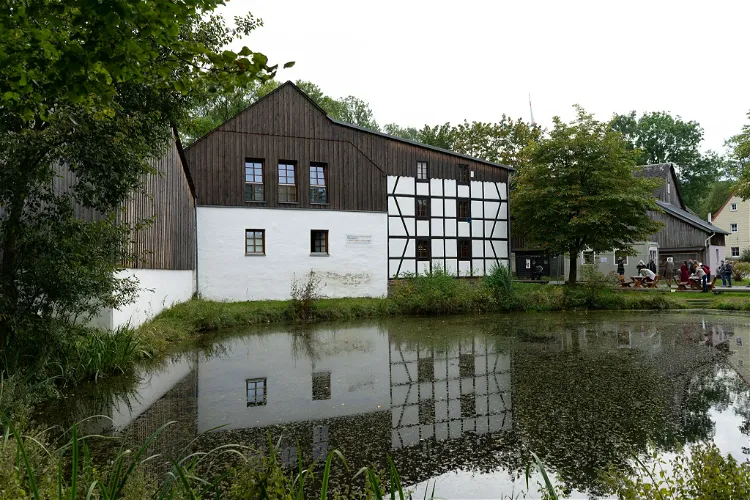
Deutsch-Deutsches Museum Mödlareuth
GefellThe Deutsch-Deutsche Museum Mödlareuth is situated in the town of Mödlareuth, which was once divided by the inner German border. This unique location provides a tangible historical context for the museum's exhibits, making it a fascinating destination for those interested in the history of Germany's division and reunification.
Museum Automobile World Eisenach
EisenachThe museum automobile world eisenach is much more than just a technology museum - it tells the story of the German automotive industry. Cars have been built in the Wartburg town for over 125 years, which is impressively reflected in the exhibition. Visitors experience the development of vehicle prod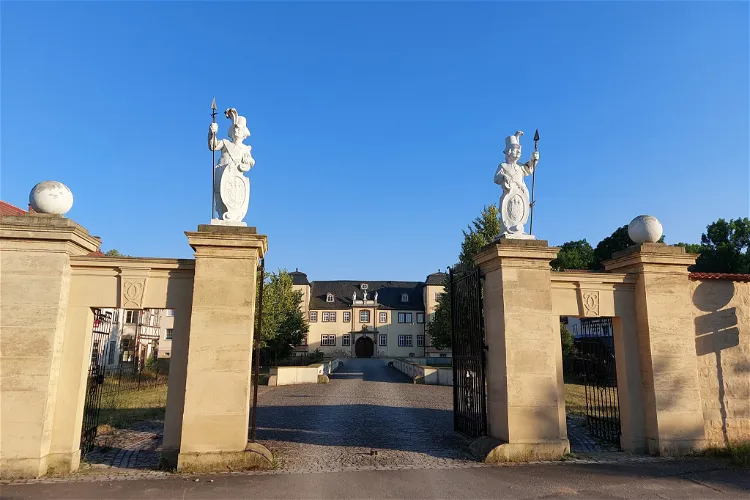
Schloss Molsdorf
ErfurtSchloss Molsdorf is a Baroque castle situated in Molsdorf, a district of Erfurt. It is located approximately 12 kilometers south of the city. The castle is considered one of the most beautiful Baroque castles in Thuringia and is a significant part of the region's cultural heritage.